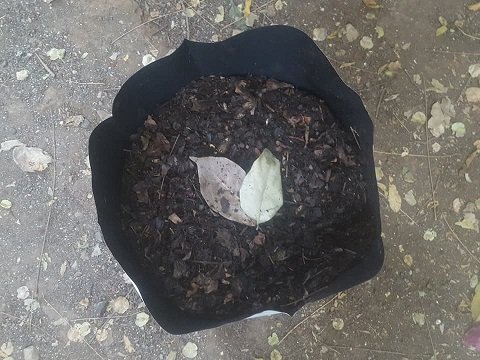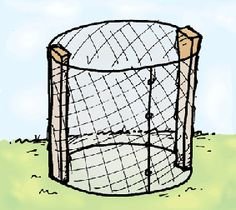In nature, processes are cyclic.
Means there is no end to it. Output of one systems serves as input to some other system.
While we, humans used natural, biodegradable products, there was not concept of waste.
We used plates made of leaves. We used clothes made of natural fabric.
Newspaper, leaves served as packaging material.
You just discard it after use and soil will take care of it.
Everything comes from the soil and everything goes back to the soil.
This is the “soil-to-soil” principle in nature.
But then, our lifestyle changed. We started manufacturing materials and that introduced the concept of “WASTE”.
As you see, it is quite a recent concept.
Our ancestors never had to deal with this problem.
Because of our changed lifestyle, our modified living places, we constantly encounter waste.
Same is with dry leaves.
For forest, dry leaf is never a problem.
Whatever falls on the floor remains there.. Shed leaves form a carpet, layer over the soil.
This layer remains as it is throughout the summer.
When rains arrive, leaves decompose. Some proportion of nutrients that the tree absorbs from the soil are present in these leaves. These nutrients, when leaves decompose, are returned to the soil.
Soil keeps receiving organic matter and retains its productivity.
If we can follow this process, major challenge of leaf litter management will be solved, isn’t it?
So how do we do that in cities and towns?
Agreed, we cannot keep leaves as it is and let the natural process take place.
In many instances, our premises are tiled/ paved. There is no open soil available.
And how can we keep such a large quantity just heaped in the premises.
I am with you on this. 100%.
But here is my solution. We modify this process a bit.
How?
We compost these leaves, but at a location convenient to us.
This is how..
Collect the leaves.
Dig a ditch
OR
Construct a temporary enclosure
OR
Just create such pile
Aeration, temperature and moisture (ATM 
We, in India need not worry about T factor. Sun takes care of it for us.
For porous enclosure, and pile aeration is not a challenge. For the ditch, erect a PVC pipe with holes in it in the centre, so that even lower layers will get enough aeration.
For moisture, we need to water it daily. Just as we water garden plants.
Just enough to make leaves moist.
If you add leaves daily, then once a week, do add some culture to speed up the process.
What is culture?
It is microbes that we supply. Just like curding of milk. We just add a small quantity of bacteria (curd) to the milk. And our task is done. Bacteria multiply and convert whole quantity of milk into curd.
Concept is same here.
What can we use as culture?
Soil – Handful of soil. Just remember, use healthy soil. Not the hardened one that has been constantly exposed to the sun.
Cow dung
Buttermilk (an expensive option. Only if you have it in excess)
Compost (borrowed from somebody at first. Later you can use your own ready compost as culture)
Compost culture (Inora)
Microbe mixture (Daily Dump)
You can create alternate layers of kitchen waste and dry leaves. In that case, you are relieved from daily watering duty. Necessary moisture will be provided by the green component.
If it is only dry leaves, then composting takes a little longer. But not to worry. You will get compost.
Use the ready compost for garden. And see your garden go green on the brown leaves.
HAPPY COMPOSTING!








Hello! I simply wish too offr you a huge thumbs up for your
excellent information you have got here on this post.
I’ll be returning to your web site for more soon.
Thank you for kind words.
How long does it take for the dried leaves to compost in humid weather like Mumbai?
And also if alternate layers of wet waste and dried leaves are used?
Very nice activity.can we get compost manure for my terrace garden .if yes cost and collection venue please.